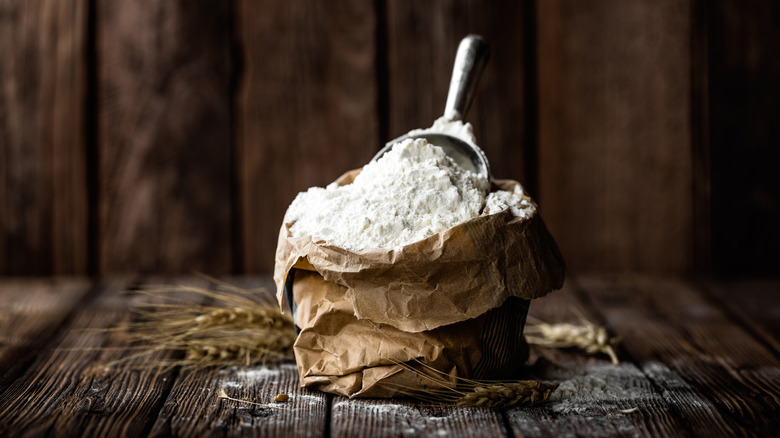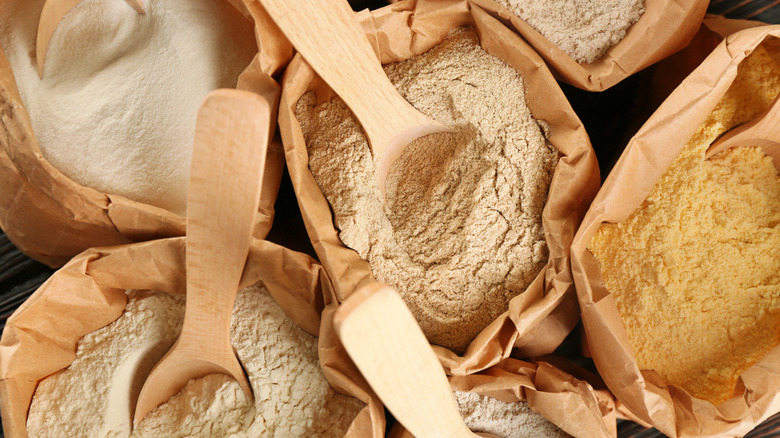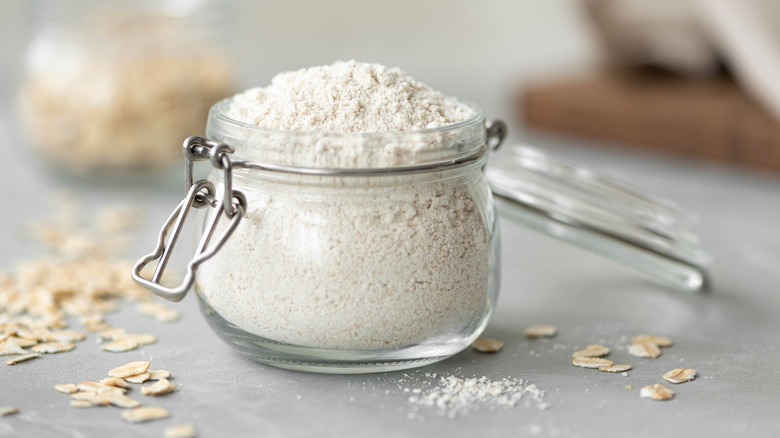You Should Probably Check And See If Your Flour Has Expired
So you're kneading flour to make fresh bread or folding it into a batter for chewy chocolate chip cookies, but what's that? The bakes seem more crumbly than they should and taste weird even though you used the same recipe that you always do? Chances are, your not-so-fresh flour is to blame. Much like oil and sugar, flour is not something that you'd think needs to be checked upon every so often, especially since it contains little to no moisture, which isn't a suitable environment for harmful bacteria to grow anyway. But anything that isn't a preservative will spoil eventually, and so does flour.
The question of expired flour is not so much about safety as it is about quality. While expired flour won't cause you much harm (unless it has obvious signs of mold or is infested by bugs of course), its quality will certainly deteriorate over time. Look for any funky smells that could indicate that the flour has oxidized, any lumps that may have formed due to moisture, or yellow discoloration — these are all signs that your flour is well past its prime and should be tossed out. In general, a bag of flour should be good to use for anywhere between three to eight months when stored at room temperature, but that window isn't set in stone. The type of flour plays a huge role in determining its shelf life as does how well it is stored because not all flours spoil at the same rate.
Not all flours are the same
Flours moistly spoil due to the fats present in them – and because not all flours have the same amount of fat, they all spoil at different rates. Refined flours (such as all-purpose flour) have the least amount of fat, so they also last the longest. So all those cake-, bread-, pastry-, and even tapioca flours sitting in your pantry can be stored for up to two years without worry. On the flip side, gluten-free flours, such as those made from nuts, have a higher fat content and spoil more than twice as quickly — in roughly three to six months.
Whole wheat flours (like buckwheat, pumpernickel, and white whole wheat flour) sit somewhere in the middle. Whole wheat flours aren't as rich in oils as gluten-free flours, but they are also less processed than refined flours and contain some amount of fats that can spoil. As such, these flours should stay fresh for anywhere between three months to a year when stored well.
While most flours can be used beyond their best-by dates to a certain extent, one flour to be particularly wary of is the self-raising kind. Though refined, self-raising flours contain baking soda, which can lose its potency with time. You can still use the flour beyond the date written on the pack of course, but don't be surprised if those cakes and breads don't rise and fall disappointingly flat instead.
How to store flour for optimum freshness
Some flours certainly can stay fresh for longer than others, but all of them will spoil just as quickly if they aren't stored properly. Moisture is a perishable item's biggest foe, so the first thing to do is transfer the flour from its bag to an airtight container instead — even a ziplock bag will do. You could keep the flour at room temperature away from heat, light, and oxygen — but you can also store it in a freezer or refrigerator to prolong its freshness for even longer.
Freezers and refrigerators can be moisture-filled environments — so when storing flour here, it is best to be extra cautious that the containers are sealed tight, even doubling up the layers of ziplock bags and containers if necessary. Also, make sure to remove the flour in advance if you need room-temperature ingredients — cold ingredients don't always fare well in baking. Regardless of where you've stored the flour, however, always make sure to give it a good whiff or check for bugs, mold, discoloration, and lumps before you go ahead and use it. That tiny bag of flour sitting at the back of your pantry since who knows when can indeed go rancid and affect the quality of your bakes for the worse.



